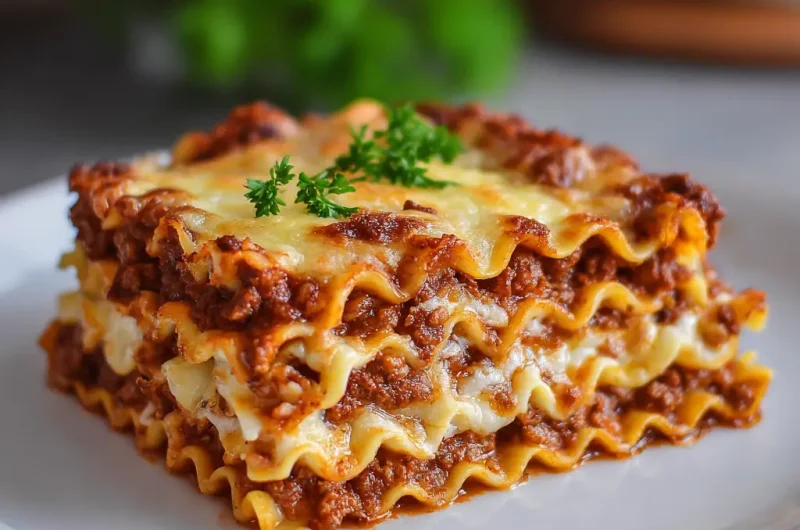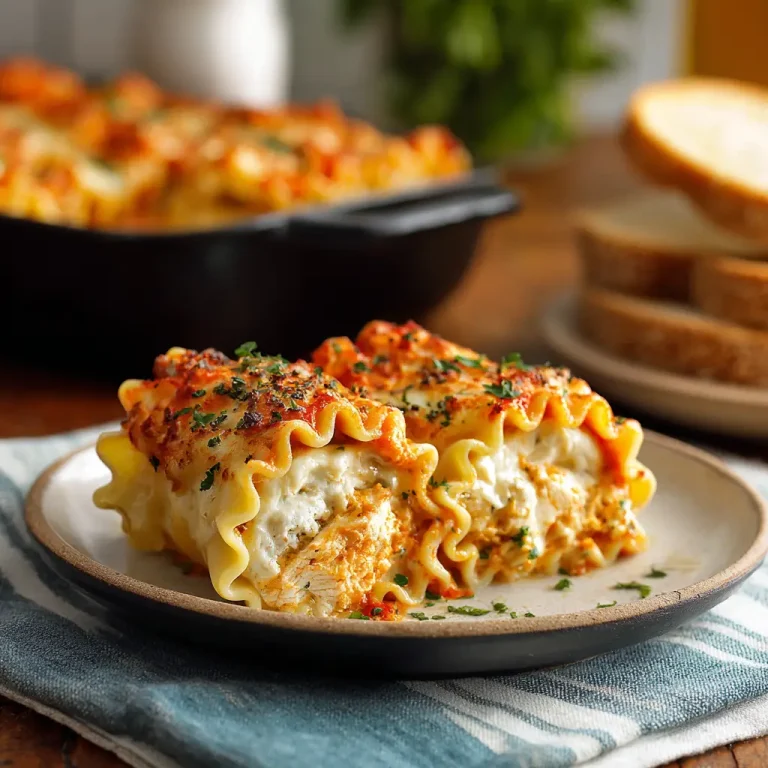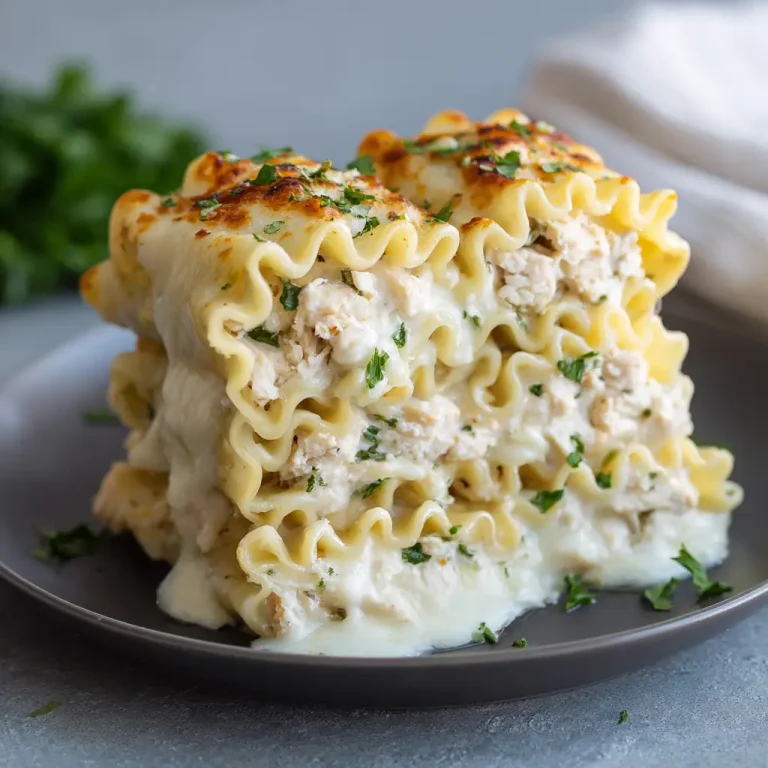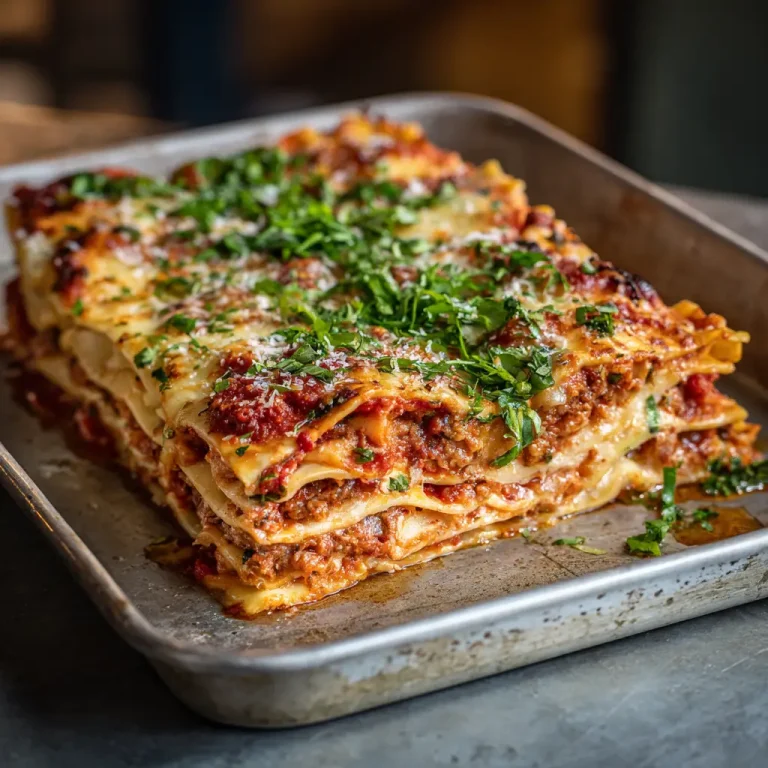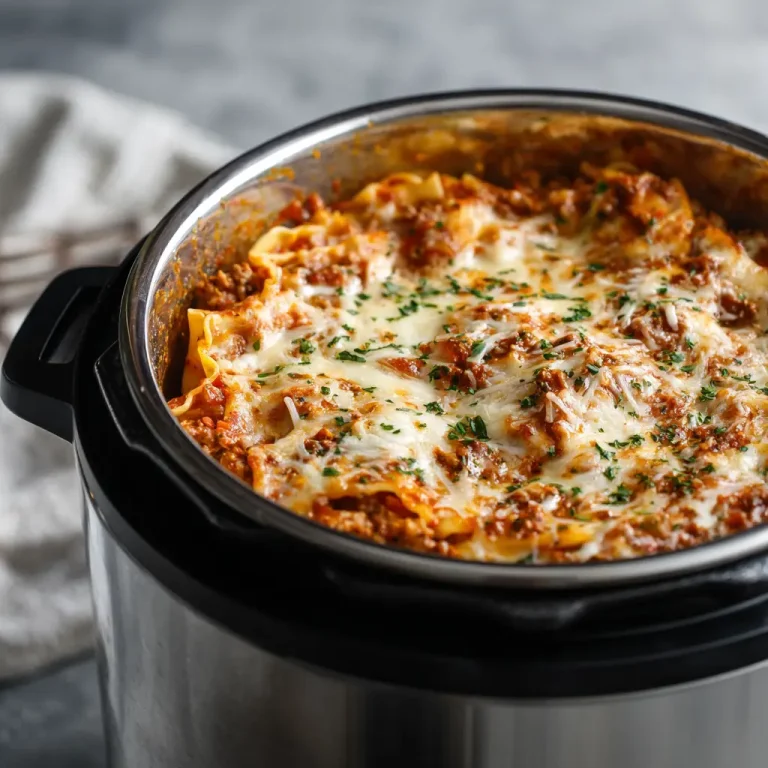Lasagna Recipe: How to Make Classic Homemade Lasagna Step by Step
Introduction
Lasagna evokes a warm kitchen filled with rich aromas, melting cheese, simmering sauce, and layers of pasta that come together in comforting harmony. Every bite brings a blend of flavors and textures that feels like a hug. In my years of cooking and experimenting in home kitchens, I have refined a version of lasagna that balances depth and lightness. In this article I will walk you through how to make lasagna from scratch step by step. You will find details from ingredients to serving ideas, with tips to make it your signature dish. You will also see nutrition facts to help you understand what you eat. Ready your apron and let us build a lasagna that becomes a favorite for family and friends.

Ingredients Needed
Here is a table of ingredients you will need for a classic lasagna along with approximate calorie counts per amount used:
| Ingredient | Quantity | Approximate Calories |
|---|---|---|
| Lasagna pasta sheets | 12 sheets | 420 kcal |
| Ground beef (lean) | 500 grams | 1 150 kcal |
| Olive oil | 2 tablespoons | 240 kcal |
| Onion (medium, chopped) | 1 | 45 kcal |
| Garlic cloves (minced) | 3 cloves | 13 kcal |
| Crushed tomatoes (canned) | 800 grams | 160 kcal |
| Tomato paste | 2 tablespoons | 30 kcal |
| Dried oregano | 1 teaspoon | 5 kcal |
| Dried basil | 1 teaspoon | 5 kcal |
| Salt | to taste | 0 kcal |
| Black pepper | to taste | 0 kcal |
| Ricotta cheese | 400 grams | 600 kcal |
| Egg | 1 | 70 kcal |
| Fresh parsley (chopped) | 2 tablespoons | 5 kcal |
| Mozzarella cheese (shredded) | 300 grams | 900 kcal |
| Parmesan cheese (grated) | 50 grams | 200 kcal |
Total approximate calories of full lasagna before slicing: 3 838 kcal
If you cut into eight equal servings, each serving is about 480 kcal.
Feel free to swap or lighten some ingredients to suit your preferences.
Step by Step Cooking Instructions
- Pre heat your oven
Preheat to 180 °C (approximately 350 °F). Make sure the rack is in the middle. - Prepare the meat sauce
Put a large skillet or saucepan on medium heat. Add olive oil and let it warm. Add chopped onion and sauté until soft and translucent. Stir in minced garlic and cook for about one minute, careful not to burn it. Add the ground beef, breaking it into small pieces. Cook until the meat is browned and no longer pink. Drain excess fat if needed. Pour in crushed tomatoes and tomato paste. Stir well to combine. Season with oregano, basil, salt, and pepper. Let the sauce simmer for fifteen to twenty minutes, stirring occasionally, until it thickens slightly.If you want more information, you can also check out our article on Chicken Lasagna - Prepare the cheese filling
In a bowl combine ricotta cheese, egg, chopped parsley, and a pinch of salt and pepper. Mix gently until smooth and unified. - Cook or soften lasagna sheets
Some lasagna sheets require pre cooking in boiling salted water for a few minutes until al dente. Others are oven ready and need no boiling. Follow instructions on your package. If boiling, drain sheets carefully and lay them flat so they do not stick together. You may lightly oil them or use cold water rinse if needed. - Assemble the lasagna
Take a baking dish (for example 9 by 13 inches or equivalent). Spread a thin layer of meat sauce on the bottom. Lay a layer of lasagna sheets to cover. Spoon half of the ricotta mixture across the sheets. Add a third of the meat sauce over that. Sprinkle some mozzarella and parmesan. Next add another layer of sheets. Then the rest of the ricotta, followed by more meat sauce. Sprinkle again with cheeses. Finish with a final layer of sheets, spread remaining meat sauce, and top generously with mozzarella and parmesan. - Bake until bubbly
Cover the dish loosely with foil (you may want to spray or oil the underside so it does not stick). Bake for about twenty five to thirty minutes covered. Remove the foil and bake another ten to fifteen minutes so the cheese browns and bubble. Check whether the edges are bubbling and the top is golden. - Rest before cutting
After you remove from oven allow the lasagna to rest for at least ten to fifteen minutes. Resting helps the layers set and makes cutting cleaner. Use a sharp knife or spatula to slice into portions.
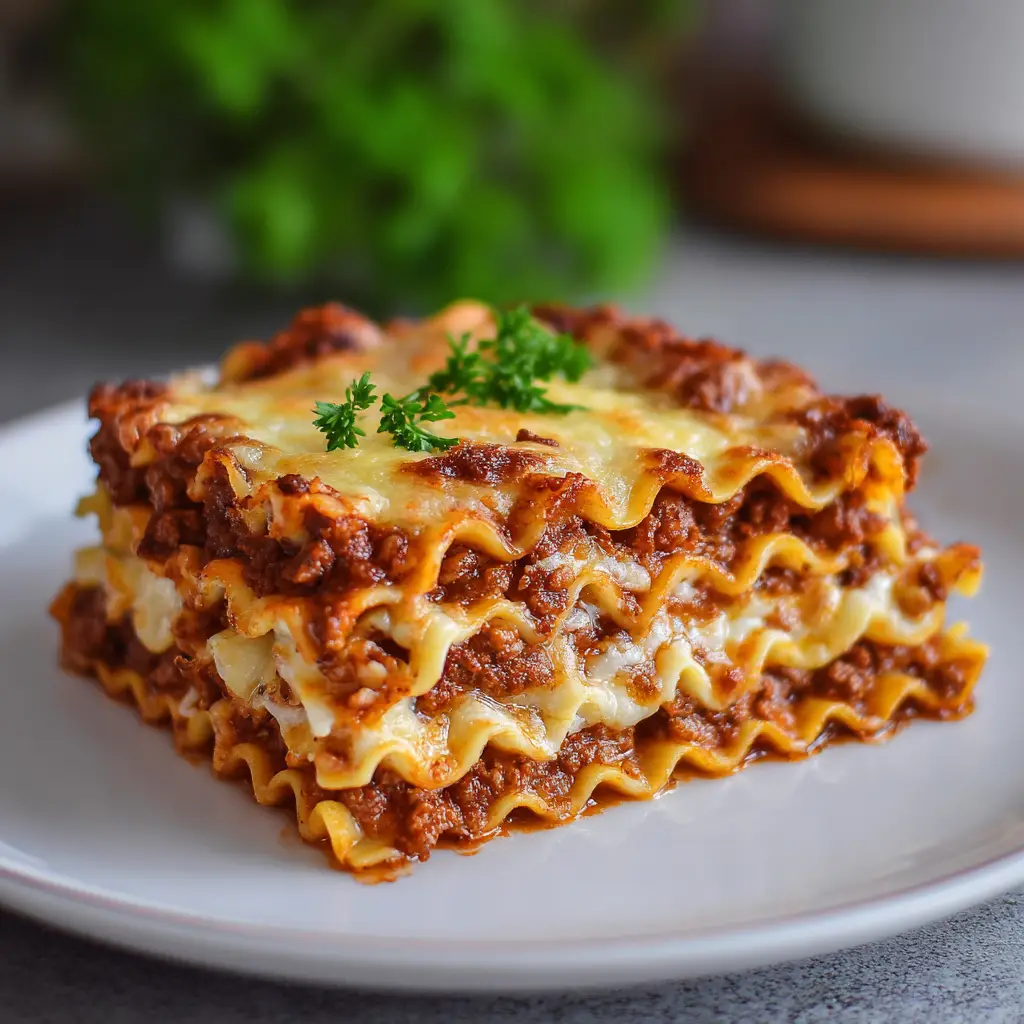
Tips for Customizing the Recipe
- Use ground turkey or chicken instead of beef to lighten the dish.
- Add layers of vegetables such as zucchini, spinach, mushrooms, or eggplant to boost nutrition and variety.
- Use cottage cheese or part skim ricotta to reduce fat.
- Try adding a bit of nutmeg or cinnamon into the cheese mixture for interesting flavor nuance.
- Swapping some or all of the mozzarella for provolone, fontina, or smoked cheese gives a twist.
- Use fresh herbs instead of dried if available; they provide brighter flavor.
- Incorporate a layer of béchamel sauce (milk thickened with flour and butter) between ricotta and meat for a creamier texture.
- For gluten free versions use gluten free lasagna sheets.
- For a spicy version add red chilli flakes or chopped fresh chilli to meat sauce.
- To make it ahead, assemble the lasagna fully, cover tightly, refrigerate overnight, and bake next day with extra bake time if cold.
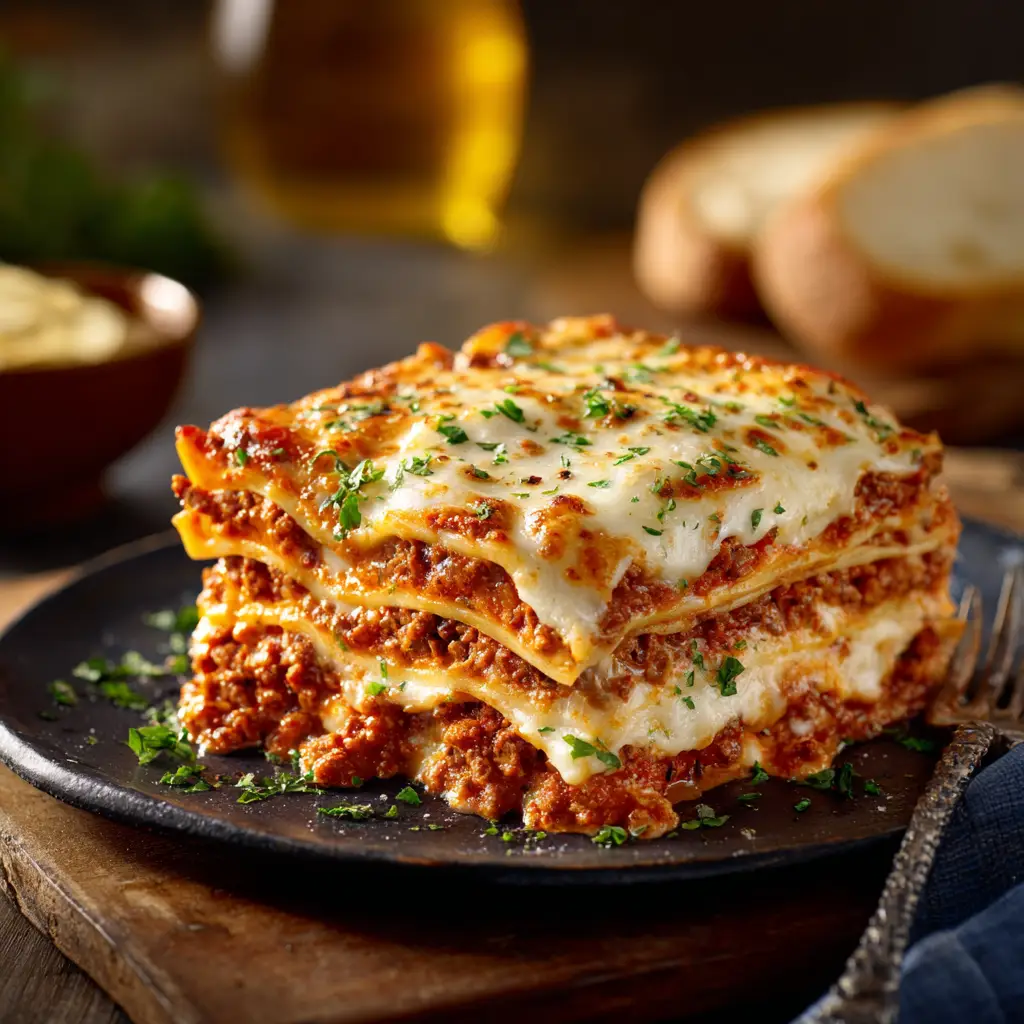
Nutritional Information
Here is a breakdown of key macronutrients for one standard serving (approximately one eighth of full lasagna):
Keep in mind these are estimates. Using leaner meat, lower fat cheeses, or adding vegetables will shift those numbers. If you serve with salad and water rather than soft drinks, the overall meal balance improves.
Serving Suggestions
Lasagna stands well on its own but pairing it with complementary sides creates a full meal experience. Consider a crisp garden salad dressed lightly with olive oil and lemon to cut through richness. Serve garlic bread or crusty bread to mop up sauce. A simple steamed vegetable, like green beans or broccoli, adds color and fiber. Accompany with a glass of red wine or iced tea depending on preference. For dessert go with something light and fruity like sorbet or fresh berries to balance the heaviness of lasagna. If serving for guests, garnish with fresh basil leaves or parsley and present in attractive baking dishes to enhance appeal.
Lasagna Recipe: How to Make Classic Homemade Lasagna Step by Step
Course: Blog8
servings30
minutes45
minutes480
kcalIngredients
12 lasagna pasta sheets (boiled or oven-ready)
500g lean ground beef
2 tablespoons olive oil
1 medium onion, finely chopped
3 garlic cloves, minced
800g crushed tomatoes (canned)
2 tablespoons tomato paste
1 teaspoon dried oregano
1 teaspoon dried basil
Salt, to taste
Directions
- Preheat your oven to 180°C (350°F).
- Prepare the meat sauce:
- Heat olive oil in a large pan. Add chopped onion and cook until soft. Add garlic and sauté for 1 minute. Add ground beef and cook until browned. Drain any excess fat. Stir in crushed tomatoes and tomato paste. Season with oregano, basil, salt, and pepper. Let simmer for 20 minutes.
- Prepare the ricotta mixture:
- In a bowl, mix ricotta cheese, egg, chopped parsley, salt, and pepper until smooth.
- Cook or soak lasagna sheets as needed based on the package instructions.
Recipe Video
Notes
- For extra flavor, consider adding sautéed mushrooms or spinach to your meat sauce. You can also substitute ground turkey or lentils for a lighter or vegetarian version. If using fresh herbs instead of dried, double the amount for a fresher taste.
Frequently Asked Questions
Can I freeze lasagna before or after baking?
Yes you can freeze both unbaked and baked lasagna. Wrap tightly in foil and place in freezer safe containers. For unbaked lasagna allow extra bake time when cooking from frozen. For baked leftovers thaw overnight in fridge and reheat covered until warmed through.
How long does lasagna keep in the refrigerator?
Stored in an airtight container it will keep for three to four days safely.
Can I make lasagna vegetarian?
Absolutely. Replace ground meat with vegetables like mushrooms, zucchini, eggplant or lentils. Use the same sauce and cheese layers. Optionally add spinach or kale for extra greens.
Is it possible to make a dairy free version?
Yes substitute dairy cheeses with plant based ricotta alternatives and vegan mozzarella. Use soy or almond milk if making a cream sauce.
How do I know when lasagna is done baking?
Look for bubbling sauce along edges and a golden cheese crust. Insert a knife to ensure layers feel hot and firm. After resting the interior should hold shape when cut.
Conclusion
Creating a lasagna from scratch rewards you with deep flavor and satisfying textures that can impress loved ones or lift your own dinner routine. Layer by layer you build a dish that feels comforting, generous, and worthy of sharing. As you master the recipe you can adapt it to your tastes—lighter, richer, spicier, or more vegetable forward. Serve it with simple sides and let the lasagna shine. May your kitchen be filled with the aroma of melted cheese and savory sauce and may each bite remind you of why cooking truly delights.

